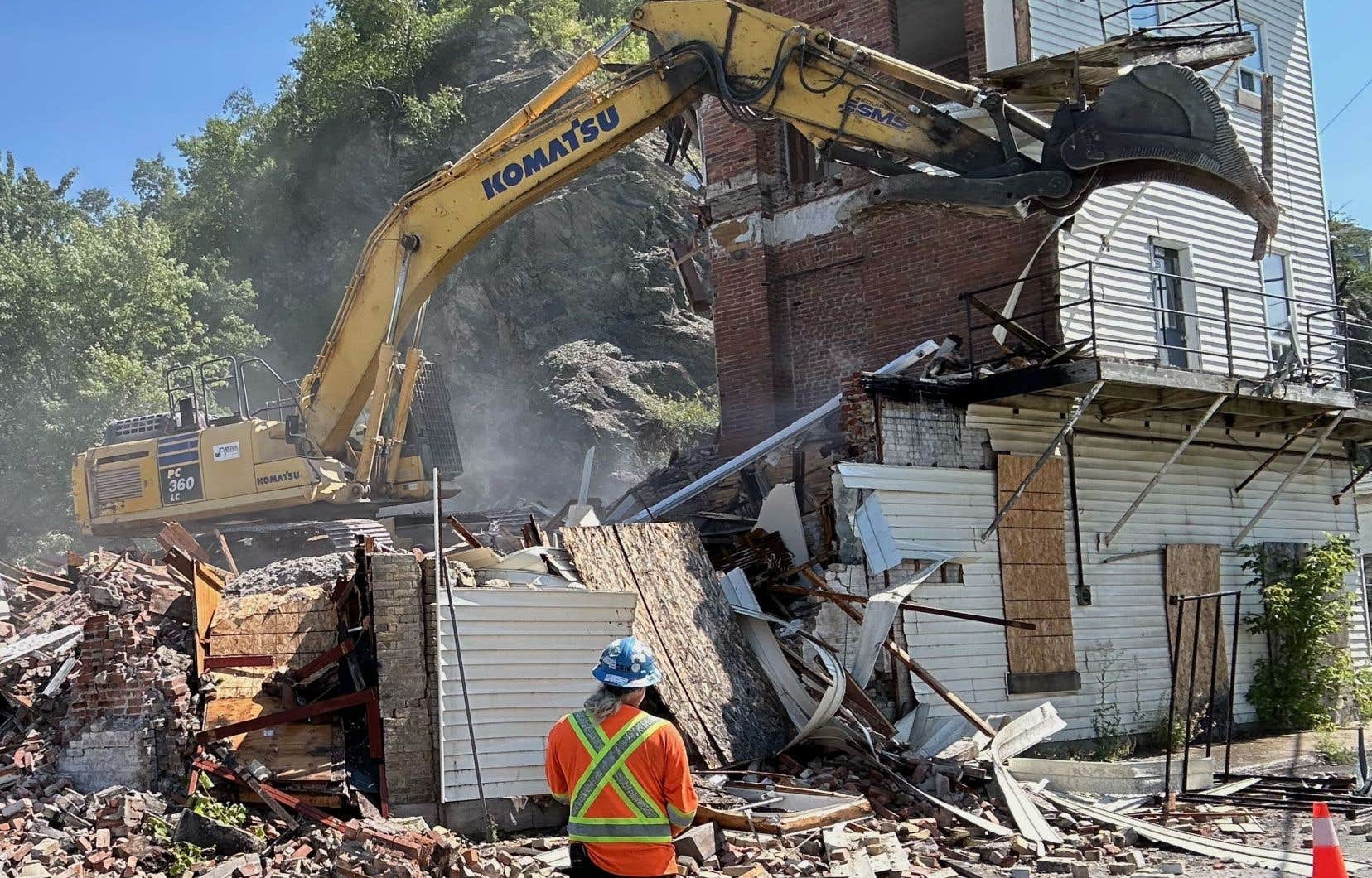Another century-old building has bitten the dust in Lévis. On Tuesday, demolition picks destroyed the former Victoria Hotel, built in 1868 and emblematic of the city’s past railway glory, which had been gnawing away at its decrepitude for decades. A destruction that confirms, in the eyes of many, the city’s reputation as the great reaper of built heritage.
At its peak, when the railway crisscrossed the south bank of the river and the Grand Trunk terminal was located where Saint-Laurent Park is today, the building was one of the most prestigious hotels in Lévis and an architectural jewel of neoclassical inspiration that lent majesty to the city’s riverfront.
In its later years, however, the building had lost its former luster: its white Scottish brick walls covered with vinyl siding, its amputated façade, its boarded-up windows and its interior given over to squatters testified to years of indifference towards it.
The authorities evacuated the last tenants in 2020, concerned about the state of the structure, which was deemed unfit for habitation.
On Tuesday, the Victoria Hotel, first destroyed by fire in 1867, was once again on the ground – this time with no hope of rising from its ashes.
Tribute in the condos
“These will be luxury condos,” explains the lot’s owner, Philippe Thivierge, about the construction he hopes to start this fall. Seven units in a four-storey building that, the owner swears, “will reflect all [sic] the history of the building”.
“There will be a train bell, a locomotive coal furnace, a three-dimensional railway track, a spiral made of railway to remind us of what it was,” lists the developer. “There will also be a commemorative plaque to remind us of the era and explain what this building was used for. My children will be able to understand what was there before when they see the completed building.”
In Lévis, it’s discouraging. We’re not talking about protecting heritage, we’re talking about demolishing heritage.
It took two demolition requests to complete the former prestigious hotel. The first, filed in 2020, had raised a storm of protest and was refused by the City because the replacement project did not fit in well with the urban fabric.
“The architectural harmony of Saint-Laurent Park lies, among other things, in the succession of 15 out of 16 houses that are classified as heritage sites. [et] “The Victoria Hotel is the highlight of this parade,” lamented the Regroupement pour la mise en valeur du secteur de la rue Saint-Laurent. For them, destroying it “is destroying the exclamation point of the Saint-Laurent park!”
Action patrimoine had also campaigned for the renovation and preservation of the building. “The demolition of the Victoria Hotel would have serious consequences for the entire Anse Tibbits,” the organization wrote in October 2020, “which bears witness to an important part of Lévis’ history and its economic development.”
“In Lévis, it’s discouraging”
Now that the building is a thing of the past, Chloé Breton, head of positions and training at Action patrimoine, draws up a poor assessment of the performance of the City of Lévis in terms of protecting its architectural gems.
“Generally, in a city or municipality, we will find one or two heritage buildings that are subject to demolition,” she says. “In Lévis, we have the impression that every month, there is a new file. There is an observable recurrence of heritage buildings, sometimes centuries old, that are the subject of a demolition request and the City, very often, will grant it.”
She fears that the destruction of the former Victoria Hotel will prompt other owners of heritage buildings around Tibbits Cove to call for their demolition. “When we remove such an emblem in a neighbourhood that could contain others, we are removing a stone from the heritage edifice,” she illustrates. “Little by little, the whole neighbourhood loses its heritage value.”
“In Lévis, it’s discouraging,” adds Jean-Louis Vallée, president of the Fédération Histoire Québec. “We’re not talking about protecting heritage, we’re talking about demolishing heritage. It’s as if the municipal council, which has been in place for a long time, hasn’t evolved and doesn’t see any value in it. For them, these are old affairs that are worthless.”
If the city simply enforced its regulations, fewer old buildings would end up in a state of advanced decay to the point of being beyond repair, he believes. “For me, it’s normal to file a demolition application. What’s not normal is that the committee’s response is automatically: ‘we’re demolishing.'”
The building that once housed the Victoria Hotel did not have any heritage designation, although the City of Lévis recognized its high historical value. At the beginning of its existence, the establishment represented “the most prestigious luxury hotel on the right bank of the St. Lawrence, from Ontario to the Gulf of St. Lawrence,” according to a brief presented in 2020 to the Lévis demolition committee.
It was designed by architect Edward Staveley. His other works include the Anglican Church in Lévis, now a concert hall, the Cataraqui Estate in Quebec City, and the Canadian Institute on Stanislas Street, among many others.
